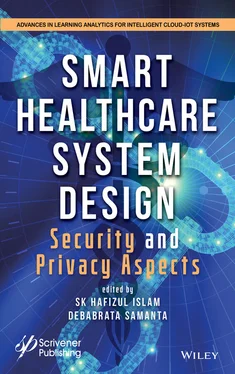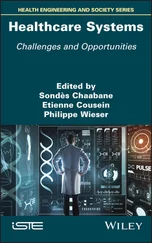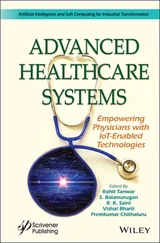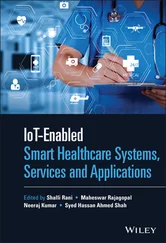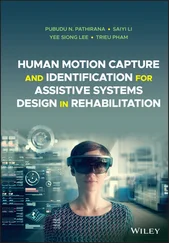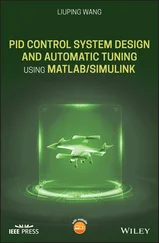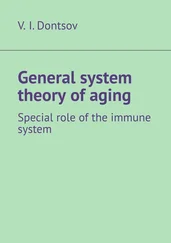1 Cover
2 Title Page
3 Copyright
4 Dedication
5 Preface
6 Acknowledgments
7 1 Machine Learning Technologies in IoT EEG-Based Healthcare Prediction 1.1 Introduction 1.2 Related Works 1.3 Problem Definition 1.4 Research Methodology 1.5 Result and Discussion 1.6 Conclusion
8 2 Smart Health Application for Remote Tracking of Ambulatory Patients 2.1 Introduction 2.2 Literature Work 2.3 Smart Computing for Smart Health for Ambulatory Patients 2.4 Challenges With Smart Health 2.5 Security Threats 2.6 Applications of Fuzzy Set Theory in Healthcare and Medical Problems 2.7 Conclusion
9 3 Data-Driven Decision Making in IoT Healthcare Systems—COVID-19: A Case Study 3.1 Introduction 3.2 Experimental Analysis 3.3 Multi-Criteria Decision Making (MCDM) Procedure 3.4 Conclusion
10 4 Touch and Voice-Assisted Multilingual Communication Prototype for ICU Patients Specific to COVID-19 4.1 Introduction and Motivation 4.2 Proposed Prototype of Touch and Voice-Assisted Multilingual Communication 4.3 A Sample Case Study 4.4 Conclusion
11 5 Cloud-Assisted IoT System for Epidemic Disease Detection and Spread Monitoring 5.1 Introduction 5.2 Background & Related Works 5.3 Proposed Model 5.4 Methodology 5.5 Performance Analysis 5.6 Future Research Direction 5.7 Conclusion
12 6 Impact of Healthcare 4.0 Technologies for Future Capacity Building to Control Epidemic Diseases 6.1 Introduction 6.2 Background and Related Works 6.3 System Design and Architecture 6.4 Methodology 6.5 Performance Analysis 6.6 Future Research Direction 6.7 Conclusion
13 7 Security and Privacy of IoT Devices in Healthcare Systems 7.1 Introduction 7.2 Background and Related Works 7.3 Proposed System Design and Architecture 7.4 Methodology 7.5 Performance Analysis 7.6 Future Research Direction 7.7 Conclusion
14 8 An IoT-Based Diet Monitoring Healthcare System for Women 8.1 Introduction 8.2 Background 8.3 Necessity of Wearable Approach? 8.4 Different Approaches for Wearable Sensing 8.5 Description of the Methodology 8.6 Description of Various Components Used 8.7 Strategy of Communication for Wearable Systems 8.8 Conclusion
15 9 A Secure Framework for Protecting Clinical Data in Medical IoT Environment 9.1 Introduction 9.2 Medical IoT Application Domains 9.3 Medical IoT Concerns 9.4 Need for Security in Medical IoT 9.5 Components for Enhancing Data Security in Medical IoT 9.6 Vulnerabilities in Medical IoT Environment 9.7 Solutions for IoT Healthcare Cyber-Security 9.8 Execution of Trusted Environment 9.9 Patient Registration Using Medical IoT Devices 9.10 Trusted Communication Using Block Chain 9.11 Conclusion
16 10 Efficient Data Transmission and Remote Monitoring System for IoT Applications 10.1 Introduction 10.2 Network Configuration 10.3 Data Filtering and Predicting Processes 10.4 Experimental Setup 10.5 Conclusion
17 11 IoT in the Current Times and its Prospective Advancements 11.1 Introduction 11.2 How IIoT Advances Industrial Engineering in Industry 4.0 Era 11.3 IoT and its Current Applications 11.4 Application Areas of IIoT 11.5 Challenges of Existing Systems 11.6 Future Advancements 11.7 Case Study of DeWalt 11.8 Conclusion
18 12 Reliance on Artificial Intelligence, Machine Learning and Deep Learning in the Era of Industry 4.0 12.1 Introduction to Artificial Intelligence 12.2 AI and its Related Fields 12.3 What is Industry 4.0? 12.4 Industrial Revolutions 12.5 Reasons for Shifting Towards Industry 4.0 12.6 Role of AI in Industry 4.0 12.7 Role of ML in Industry 4.0 12.8 Role of Deep Learning in Industry 4.0 12.9 Applications of AI, ML, and DL in Industry 4.0 12.10 Challenges 12.11 Top Companies That Use AI to Augment Manufacturing Processes in the Era of Industry 4.0 12.12 Conclusion
19 13 The Implementation of AI and AI-Empowered Imaging Systems to Fight Against COVID-19—A Review 13.1 Introduction 13.2 AI-Assisted Methods 13.3 Optimistic Treatments and Cures 13.4 Challenges and Future Research Issues 13.5 Conclusion
20 14 Implementation of Machine Learning Techniques for the Analysis of Transmission Dynamics of COVID-19 14.1 Introduction 14.2 Data Analysis 14.3 Methodology 14.4 Results and Discussions 14.5 Conclusions
21 Index
22 End User License Agreement
1 Chapter 1 Figure 1.1 Data mining features. Figure 1.2 Data mining classification process. Figure 1.3 Block diagram of the EEG classification. Figure 1.4 Working model of IoT-based Smart Healthcare kit. Figure 1.5 Proposed block diagram. Figure 1.6 Mindwave sensor. Figure 1.7 Home pages for EEG signal design. Figure 1.8 Pseudocode for proposed EEG prediction system. Figure 1.9 Graph between TPR vs TFR. Figure 1.10 Output result accuracy predictions for based on patient EEG data. Figure 1.11 Accuracy predictions for based on type of epilepsy.
2 Chapter 2 Figure 2.1 Technical Scenario 2, normal healthcare. Figure 2.2 Structure of transformation research. Visits to the study occur at 2,... Figure 2.3 The no. of patients visits after Post Discharge [36].
3 Chapter 3Figure 3.1 Overall design.Figure 3.2 Kernel Function on non-linear SVM.Figure 3.3 Working of random forest algorithm.
4 Chapter 4Figure 4.1 Home view of touch interaction.Figure 4.2 Cross language selection display for both doctor and patient.Figure 4.3 Categorical interactions initiated by doctor.Figure 4.4 Categorical interactions initiated by patient.Figure 4.5 A sample interactive interface in English.Figure 4.6 Figure 4.5’s interactions in Tamil.Figure 4.7 A sample interactive interface in English and Tamil.Figure 4.8 A sample case study for native language selection for patient and doc...Figure 4.9 Doctor interaction view of his/her language.Figure 4.10 Patient receives doctor’s interaction in native voice & reply throug...
5 Chapter 5Figure 5.1 Framework of proposed system.Figure 5.2 Flowchart of the proposed model.Figure 5.3 Snapshot of the home screen on the website.Figure 5.4 Snapshot of the ‘Registration Details’ page on the website.Figure 5.5 Snapshot of the ‘Patient’s Test Details’ page on the website.Figure 5.6 Snapshot of the ‘Sensor Readings’ page of a patient on the website.Figure 5.7 Snapshots of the screen of the phone application showing the differen...Figure 5.8 Snapshot from the phone application showing the Pulse Rate reading of...
6 Chapter 6Figure 6.1 General methodology of our proposed model.Figure 6.2 Algorithm of proposed framework.
7 Chapter 7Figure 7.1 Proposed system design and architecture model.Figure 7.2 Login window for Doctor/Nurse/Health official login from computer ter...Figure 7.3 Login window for Doctor/Nurse/Health official login from Android devi...Figure 7.4 Patient monitoring window from computer terminal.Figure 7.5 Patient monitoring window from Android tablet.Figure 7.6 Flowchart for patient clearance.Figure 7.7 Flowchart for relative clearance.Figure 7.8 Flowchart for pharmacy services clearance.Figure 7.9 Flowchart for researcher clearance.Figure 7.10 Flowchart for emergency services clearance.Figure 7.11 Flowchart for Doctor clearance.Figure 7.12 UI of unsuccessful login authentication.Figure 7.13 UI of unsuccessful OTP/MFA authentication.
8 Chapter 8Figure 8.1 Important physiologic roles of non-essential amino acids (NEAA) in hu...Figure 8.2 Overall block diagram of IOT-based health monitoring system.
9 Chapter 9Figure 9.1 Body area network [18].Figure 9.2 Various interconnection protocols in neighborhood area network.Figure 9.3 Various IoT networking devices.Figure 9.4 Smart medical network.Figure 9.5 Level of data security.Figure 9.6 Security constraints in medical IoT.Figure 9.7 Layers of healthcare security.Figure 9.8 Root of trust.Figure 9.9 Chain of trust.Figure 9.10 Architecture diagram of smart healthcare.Figure 9.11 Blockchain based IoT smart healtcare.
Читать дальше
